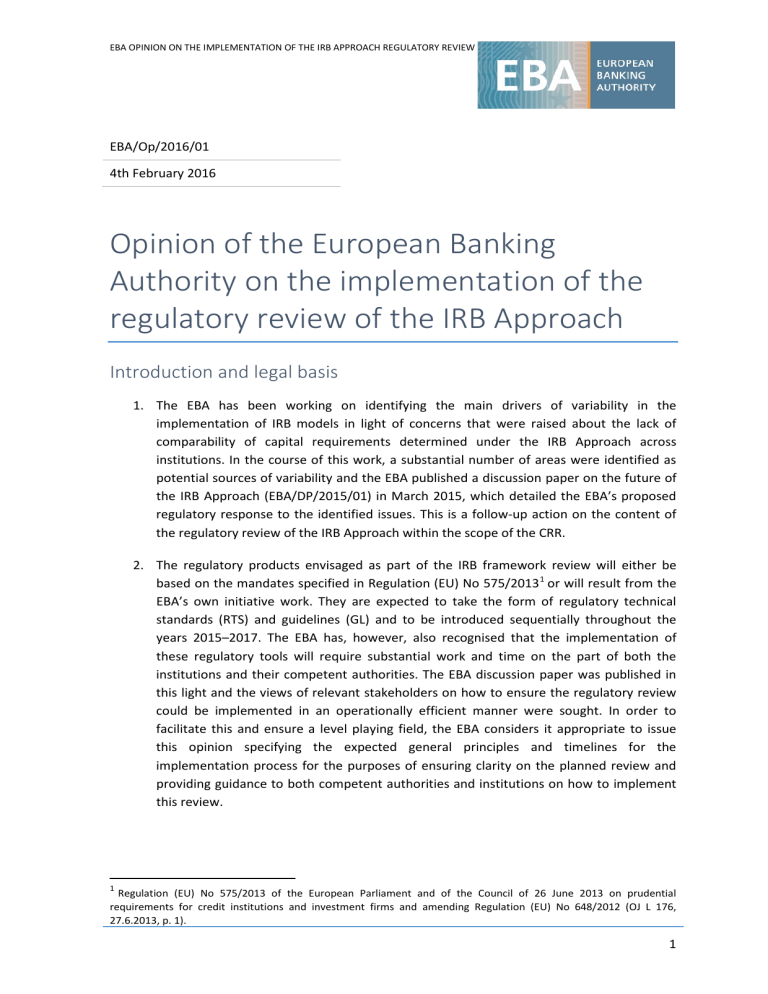
EBA OPINION ON THE IMPLEMENTATION OF THE IRB APPROACH REGULATORY REVIEW EBA/Op/2016/01 4th February 2016 Opinion of the European Banking Authority on the implementation of the regulatory review of the IRB Approach Introduction and legal basis 1. The EBA has been working on identifying the main drivers of variability in the implementation of IRB models in light of concerns that were raised about the lack of comparability of capital requirements determined under the IRB Approach across institutions. In the course of this work, a substantial number of areas were identified as potential sources of variability and the EBA published a discussion paper on the future of the IRB Approach (EBA/DP/2015/01) in March 2015, which detailed the EBA’s proposed regulatory response to the identified issues. This is a follow-up action on the content of the regulatory review of the IRB Approach within the scope of the CRR. 2. The regulatory products envisaged as part of the IRB framework review will either be based on the mandates specified in Regulation (EU) No 575/2013 1 or will result from the EBA’s own initiative work. They are expected to take the form of regulatory technical standards (RTS) and guidelines (GL) and to be introduced sequentially throughout the years 2015–2017. The EBA has, however, also recognised that the implementation of these regulatory tools will require substantial work and time on the part of both the institutions and their competent authorities. The EBA discussion paper was published in this light and the views of relevant stakeholders on how to ensure the regulatory review could be implemented in an operationally efficient manner were sought. In order to facilitate this and ensure a level playing field, the EBA considers it appropriate to issue this opinion specifying the expected general principles and timelines for the implementation process for the purposes of ensuring clarity on the planned review and providing guidance to both competent authorities and institutions on how to implement this review. 1 Regulation (EU) No 575/2013 of the European Parliament and of the Council of 26 June 2013 on prudential requirements for credit institutions and investment firms and amending Regulation (EU) No 648/2012 (OJ L 176, 27.6.2013, p. 1). 1 EBA OPINION ON THE IMPLEMENTATION OF THE IRB APPROACH REGULATORY REVIEW 3. The EBA’s competence to deliver an opinion is based on Article 29(1)(a) of Regulation (EU) No 1093/2010 2, as the development and application of internal models for the purpose of the IRB Approach relates to the EBA’s area of competence. 4. In accordance with Article 14(5) of the Rules of Procedure of the Board of Supervisors 3, the Board of Supervisors has adopted this opinion. General comments 5. The regulatory developments are scheduled to be introduced in four phases according to the schedule set out in Table 1. Table 1: EBA planned regulatory products in the area of IRB models Phase Regulatory products* Phase 1: IRB assessment methodology RTS under Articles 144(2), 173(3), 180(3b) on the By Q1 2016 assessment methodology Phase 2: definition of default Priority** RTS under Article 178(6) on the materiality threshold By mid-2016 GL under Article 178(7) on the application of the definition of default RTS under Articles 181(3a), 182(4a) on the nature, severity and duration of economic downturn Phase 3: risk parameter estimation and treatment of defaulted assets GL on downturn LGD estimation – EBA own initiative (report on Article 502) By mid-2017 GL on PD estimation – EBA own initiative (report on Article 502) GL on LGD in-default, ELBE and IRB shortfall calculation – EBA own initiative (report on Article 502) 2 Regulation (EU) No 1093/2010 of the European Parliament and of the Council of 24 November 2010 establishing a European Supervisory Authority (European Banking Authority) amending Decision No 716/2009/EC and repealing Commission Decision 2009/78/EC (OJ L 331, 15.12.2010, p. 12). 3 Decision adopting the Rules of Procedure of the European Banking Authority Board of Supervisors of 27 November 2014 (Decision EBA DC 001 (Rev4)). 2 EBA OPINION ON THE IMPLEMENTATION OF THE IRB APPROACH REGULATORY REVIEW Phase Regulatory products* Priority** RTS under Article 183(6) on the recognition of conditional guarantees Phase 4: credit risk mitigation RTS under Article 194(10) on liquid assets By end 2017 RTS under Article 221(9) on the Internal Models Approach for master netting agreements Across phases: transparency Implementation of the Basel Committee disclosure proposals (Pillar 3 disclosures) in the EU Pillar 3: work to start in 2016 * The articles in this column refer to Regulation (EU) No 575/2013. ** The dates in this column are tentative and refer to the planned deadlines for submitting the final draft technical standards to the European Commission or to the publication of final EBA guidelines, and not to the date of expected application of those instruments. It should be noted that the proposed timelines may have to be amended over time, for instance as a consequence of international developments at the level of the Basel Committee or following other legislative actions by the European Commission. 6. The EBA is of the opinion that the effective implementation of the changes in all areas should be finalised by the end of 2020. The timelines for the implementation of the changes should take into account, where relevant, the time required for the approval process for material changes and the notification period for changes that require prior notification in accordance with Commission Delegated Regulation (EU) No 529/2014 4. Specific comments General principles 7. The EBA recognises that the time taken to implement changes in the IRB Approach will depend on the specific circumstances of particular institutions, including the number and complexity of the rating systems used in the calculation of their own funds requirements for credit risk and the scope of the required changes in relation to the currently applied solutions. Given the potentially large scope of the changes, the EBA has considered introducing phase-in requirements for the various elements of the regulatory review. The EBA is also aware, however, that there may be substantial interactions across the different elements of the review and that a more pragmatic, institution-specific approach may therefore be needed. 4 OJ L 148, 20.5.2014, p. 36. 3 EBA OPINION ON THE IMPLEMENTATION OF THE IRB APPROACH REGULATORY REVIEW 8. Taking into account these specific circumstances, the EBA is of the opinion that supervisory authorities should agree with institutions the timelines for the implementation of all required changes; where the changes lead to non-compliance with the overall legislative framework governing the use of the IRB Approach, competent authorities should use Article 146 of Regulation (EU) 575/2013 and Article 101(4) of Directive (EU) 2013/36 5 to address these cases of non-compliance. 9. In specifying the timelines, competent authorities should encourage institutions to implement the changes necessary to comply with the technical standards and guidelines in the shortest time possible and to include these changes, as far as possible, in their existing plans for review and validation of internal models. The EBA plans to propose a longer period of application for the new technical standards and guidelines, as institutions may be required to introduce substantial changes. In any case, the agreed timelines should not extend beyond the end of 2020. 10. In the case of cross-border institutions, the implementation of required changes may involve joint decisions between relevant competent authorities pursuant to Article 20 of Regulation (EU) No 575/2013 and as specified in the EBA’s ITS on joint decisions on prudential requirements (EBA/ITS/2014/06). Competent authorities should coordinate on the timelines for cross-border institutions before agreeing the timelines for the implementation of the changes with institutions. Where relevant, the timelines should be discussed and agreed by colleges of supervisors. 11. Where the EBA’s timelines change and the regulatory products are not introduced in accordance with the schedule presented in Table 1, competent authorities may wish to adjust the timelines specified for the institutions to implement the changes in their rating systems accordingly. Nevertheless, the final deadline for implementation of the regulatory products published within the planned timeframe, as specified in paragraph 6, should be met, unless this is altered by a further EBA opinion. 12. In addition, in specifying the timelines for implementing the changes in internal models, competent authorities may take into account any recent decisions of the Basel Committee on Banking Supervision regarding the adequate scope of application of the IRB Approach. Application of the RTS on assessment methodology of the IRB Approach by competent authorities 13. The RTS on the IRB assessment methodology are addressed to competent authorities and will affect supervisory practices and criteria used by competent authorities in assessing an institution's compliance with minimum IRB requirements. 5 Directive 2013/36/EU of the European Parliament and of the Council of 26 June 2013 on access to the activity of credit institutions and the prudential supervision of credit institutions and investment firms, amending Directive 2002/87/EC and repealing Directives 2006/48/EC and 2006/49/EC. 4 EBA OPINION ON THE IMPLEMENTATION OF THE IRB APPROACH REGULATORY REVIEW 14. Where competent authorities, as part of their reviews of IRB models, identify elements that require some institutions to adjust their application of the IRB Approach, they should agree with the institution in question the timelines for the implementation of the required changes. In the case of cross-border institutions, this should involve agreement between the relevant competent authorities on the required changes. 15. The specified timelines should ensure timely mitigation of identified weaknesses. Nevertheless, in the specification of these timelines, competent authorities may take into account the expected upcoming regulatory developments, as specified in Table 1. In particular, in order to optimise the supervisory approval process, competent authorities may specify the timelines for mitigation of identified weaknesses in such a way that the changes stemming from the competent authorities’ assessment are conducted in accordance with the RTS on the IRB assessment methodology and that the expected changes resulting from other, upcoming regulatory products can be included in the same application for approval of a material change to a rating system. This, however, should not lead to overly lengthy implementation timelines, especially where the currently applied rating systems may lead to underestimation of risk. Therefore, based on the supervisory judgement of a competent authority, or the relevant competent authorities in the case of models subject to joint decisions, the timelines specified for the mitigation of weaknesses identified in the assessment conducted in accordance with the RTS on the IRB assessment methodology should seek the appropriate balance between the prudent and accurate application of the IRB Approach and the effectiveness of the implementation and supervisory approval processes. Implementation of changes in the definition of default 16. According to Commission Delegated Regulation (EU) No 529/2014, all changes in the definition of default require the approval of the competent authority, or the relevant competent authorities in the case of cross-border institutions. Such changes may, in particular, result from the second phase of regulatory developments envisaged in the area of the IRB Approach, as specified in Table 1. 17. In the case of institutions that use the IRB Approach, the changes in the definition of default not only require the adjustment of specific procedures and IT systems used in the default identification process but also result in the need to adjust historical data used for the purpose of risk quantification, as well as the need to recalibrate risk parameters, or at least incorporate an adequate margin of conservatism where such adjustments are not possible. The EBA recognises that these processes require a significant amount of work and therefore institutions should be given sufficient time to carry out these processes and obtain supervisory approval. 18. In the EBA’s opinion, in the case of changes in the definition of default, the supervisory approval process would be more efficiently split into two stages. First, a pre-assessment should focus on the changes to procedures and IT systems used in the process of default 5 EBA OPINION ON THE IMPLEMENTATION OF THE IRB APPROACH REGULATORY REVIEW identification with a view to ensuring that the institution starts collecting the data in a manner that is compliant with the new definition of default as soon as possible. Second, the recalibration of risk parameters should be assessed, taking into account in particular the adjustments performed by the institution in the historical data series and, where the adjustments were not fully possible, the adequacy of the additional margin of conservatism incorporated in risk estimates in order to take account of the inadequacy of historical data to the new definition of default. It is important that permission in accordance with Article 143(3) of Regulation (EU) No 575/2013 to apply an adjusted definition of default in the determination of own funds requirements for credit risk is granted only after a combined review of both stages has been performed by a competent authority, as such permission should not be granted if an institution has not yet considered the impact of the changes in the definition of default by making appropriate adjustments to its risk estimates or by applying a sufficient margin of conservatism to those risk estimates. 19. Where the changes in the definition of default do not result in material changes in risk estimates, the second stage of the assessment described in the previous paragraph may focus on those internal models for which the changes are classified as material in accordance with Commission Delegated Regulation (EU) No 529/2014 and on models applicable to material portfolios. 20. In determining the timelines for the implementation of the changes in the definition of default covered by the second stage of the assessment, competent authorities should take into account the approach proposed by an institution to recalibrating risk estimates and, where applicable, the method for adjusting historical data. Where it is considered possible and not unduly burdensome, competent authorities should encourage institutions to obtain correct historical data that reflects the currently applicable definition of default, rather than applying an additional margin of conservatism to address the inadequacy of historical data. 21. After IRB institutions have started collecting data according to the new definition of default, during their regular review of risk estimates referred to in Article 179(1)(c) of Regulation (EU) No 575/2013, they should extend or, where justified, move the window of historical data used for risk quantification to include new data. Competent authorities should verify that institutions have controls in place to ensure an adequate margin of conservatism is applied until a homogeneous default definition is reached. Implementation of changes in the estimation of risk parameters and treatment of defaulted assets 22. Although the regulatory products listed in Table 1 related to the estimation of risk parameters and treatment of defaulted assets are scheduled to be developed in the third phase of regulatory developments in the area of the IRB Approach, i.e. later than the products related to the definition of default, the final implementation deadline specified 6 EBA OPINION ON THE IMPLEMENTATION OF THE IRB APPROACH REGULATORY REVIEW in paragraph 6 is expected to be the same. Therefore, the EBA expects that when specifying the timelines for the implementation of the changes, competent authorities will realise that in order to optimise the supervisory approval process, the changes resulting from the regulatory developments in the area of estimation of risk parameters and treatment of defaulted assets can be assessed during the second stage of the assessment of the changes in the definition of default, described in paragraph 18. This would also reduce unnecessary burdens for institutions, as all necessary changes in risk estimates could be developed and implemented at the same time and described in the same application for approval of a material change to a rating system. 23. The EBA considers the LGD models for exposures in default and methods used to determine the best estimate of expected loss in accordance with Article 181(1)(h) of Regulation (EU) No 575/2013 integral parts of rating systems. Therefore, any changes in these areas should be classified in accordance with Commission Delegated Regulation (EU) No 529/2014, and in particular taking into account the requirements of paragraph 2(f) of Annex I, Part II, Section 1 and paragraph 2(h) of Annex I, Part II, Section 2 of that Regulation. Implementation of changes in credit risk mitigation techniques 24. The mandates specified in Regulation (EU) No 575/2013 for the EBA to develop technical standards in the area of credit risk mitigation, as listed in Table 1, cover only selected aspects that are not expected to have a significant impact on the rating systems of institutions, and hence it should be possible for institutions to implement the changes in this area in a relatively short timeframe. Therefore, despite plans for the technical standards related to credit risk mitigation to be developed in the last (fourth) phase of regulatory developments in the area of the IRB Approach, the final implementation deadline specified in paragraph 6 is expected to be the same. 25. It is expected that the timelines for the implementation of changes in the rating systems, in particular in LGD parameters, that result from the regulatory developments in the area of credit risk mitigation may be aligned with the implementation of other necessary changes in the rating systems. In specifying these timelines, competent authorities should take into account whether the changes in the rating systems are expected to be classified as material in accordance with Commission Delegated Regulation (EU) No 529/2014, and in particular whether the institution is planning to include additional types of collateral in the estimation of risk parameters. Disclosures 26. While the work on harmonised disclosures should rely on harmonised definitions agreed upon in the regulatory review, in 2016 the EBA will start working on the EU implementation of the BCBS revised Pillar 3 framework issued in January 2015. This framework will bring about improvements in the quality, granularity and consistency of disclosures in IRB models, and possible enhancements regarding these disclosures may be 7 EBA OPINION ON THE IMPLEMENTATION OF THE IRB APPROACH REGULATORY REVIEW implemented where relevant. The specificities of the EU banking system may require the BCBS revised Pillar 3 framework to be adapted slightly, which will be decided following the regular due process, including a consultation with institutions and other stakeholders. 27. At the same time, the EBA will continue to run specific disclosure exercises, either on a standalone basis or as part of the EU-wide stress tests, to publicise relevant information in a consistent format that is currently lacking in the disclosures of individual institutions. This relevant information may include information on exposures, risk-weighted assets and capital requirements, as well as key P&L items both on a bank-by-bank basis and on an aggregated basis by country. Aggregate risk parameters will also be published regularly by the EBA as part of its efforts to increase disclosures of the outcomes of internal models. This opinion will be published on the EBA’s website. Done at London, 04 February 2016 Andrea Enria Chairperson For the Board of Supervisors 8

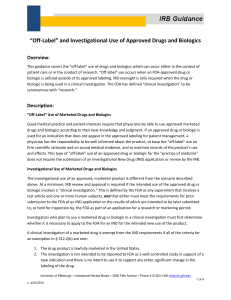
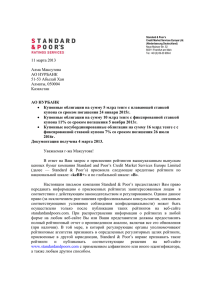

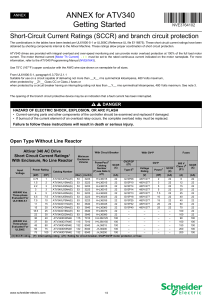
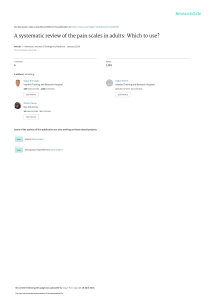
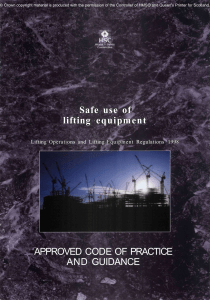
![[Электронный ресурс]. Часть 3. Америка](http://s1.studylib.ru/store/data/002227221_1-6d18e58f1a3f49be320407c099605648-300x300.png)